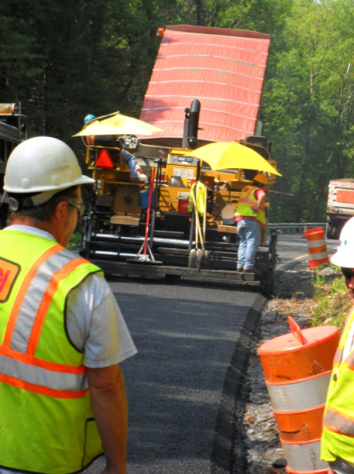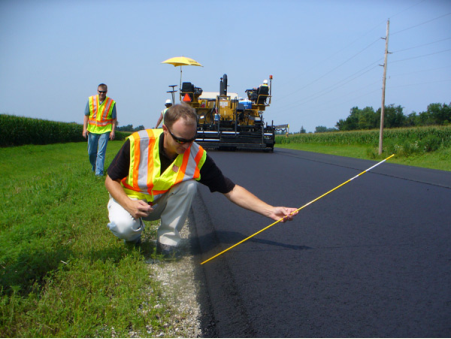Safety Edge℠

When a driver drifts off the roadway, a vertical pavement edge can create a situation where the driver oversteers to get back on the road. Safety Edge℠ is a simple but effective method of reducing highway crashes. This technique involves shaping the edge of the roadway pavement to a 30-degree angle, which provides a safer roadway edge. Safety Edge℠ is a Federal Highway Administration (FHWA) Every Day Counts Round 1 (EDC-1) innovation that Pennsylvania championed.
How Does It Work?
When drop-offs occur at various locations along the road, instead of a vertical drop-off between the paved and unpaved surface, which can result in loss of control on reentry to the roadway, Safety Edge℠ provides a smooth, controlled reentry. Safety Edge℠ can be implemented during roadway construction projects using an attachment mounted to the asphalt resurfacing equipment to create the desired 30-degree shape. Typical rolling patterns do not need to change during construction when adding a Safety Edge℠.

What Are The Benefits?
Safety Edge℠ provides a safer roadway edge and reduces the potential for rollovers and other severe crashes. It also improves pavement edge durability by enhancing the density at the pavement edge. Safety Edge℠ is inexpensive and easy to install.
Innovation in Motion
PennDOT has embraced the Safety Edge℠ paving technique and implemented it statewide since agreeing to pilot this technique in 2011. Currently, it has widespread use across the state and is part of the standards and specifications. Safety Edge℠ is now included in the PennDOT Design Manual and is to be used as a standard pavement edge treatment for bituminous pavements and shoulders, except in urban areas with curbs and sidewalks.